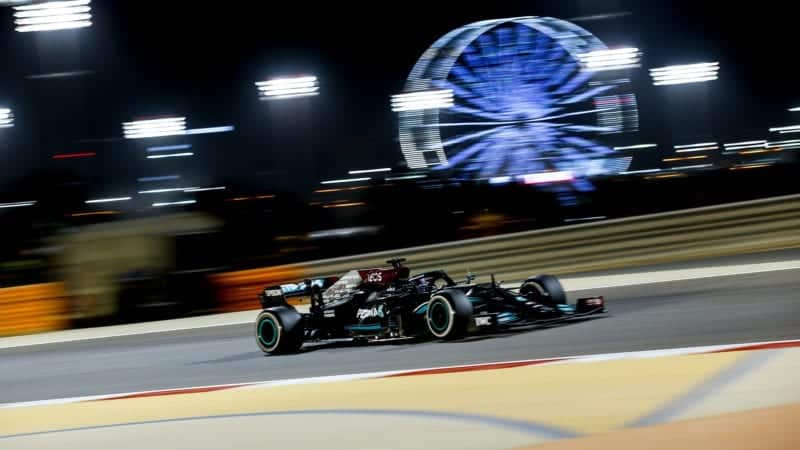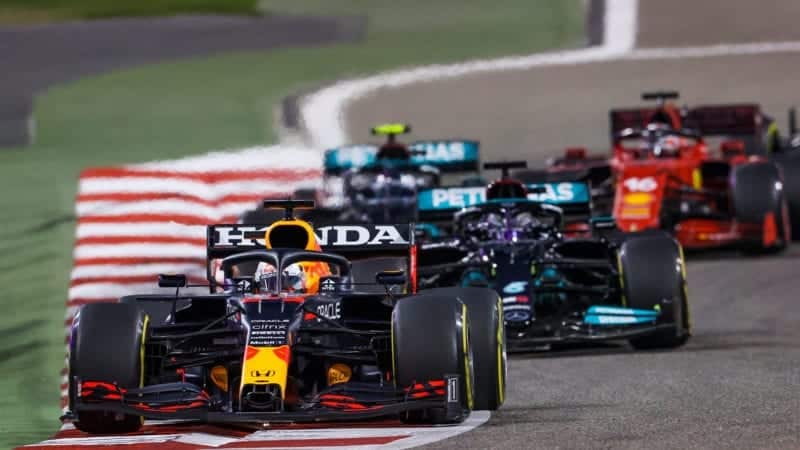As soon as there was a gap in the traffic to drop Hamilton into, Merc had resolved to bring him in. For that to work required Hamilton hang on to within less than 2sec of Verstappen. This was where he laid the foundation of his victory. He kept the medium tyre in shape while staying just out of Verstappen’s turbulence.
The gap had appeared by lap 13. Hamilton was brought in, fitted with a set of hards and sent on his way, pushing like hell on the out-lap in order to steal track position. Red Bull didn’t respond; the place was already lost as soon as Hamilton had pitted. But they couldn’t stay out too much longer – because then Verstappen would lose a further position to Bottas, who was brought in on lap 16.
The new hards were 2sec faster than the old mediums on Verstappen’s car, so Red Bull was obliged to bring him in on the next lap, way earlier than ideal in terms of tyre usage. In this way, Mercedes was using Bottas to aid Hamilton in his quest. It was a role he’d put himself into by qualifying behind and losing time in the opening stages getting back ahead of Charles Leclerc’s Ferrari, which had passed him on the opening lap.
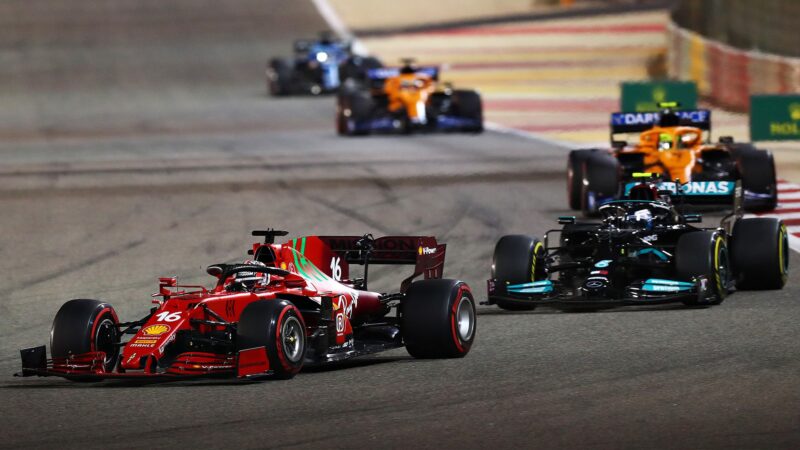
Bottas fell into Hamilton support role when he lost time behind Leclerc
Dan Istitene/F1 via Getty Images
Verstappen rejoined on his new mediums around 6sec behind the hard-shod Hamilton and set about closing that gap back down. He was just about to be within undercut range of the Mercedes by lap 28 when Mercedes headed that off by bringing in Hamilton again. The fresh set of hards fitted to his car now had to complete the remaining 28 laps, half the total race distance. He was going to have to nurse them very gently, knowing that Verstappen was going to be catching on newer tyres.
But how much newer? Here’s where Merc brought Bottas into play again. On lap 30, as soon as he’d cleared a pit stop’s-worth of gap back to fourth place Norris, he was brought in. The intention was to force Red Bull to pit Verstappen in response. In preventing Bottas from undercutting him, he’d have to come in not all that much later than Hamilton, probably four laps at the most. Thereby minimising the strategic punishment for those two early stops. It would still be a slow way to run the race, but it would force Red Bull to run theirs in much the same way, all while retaining track position over them.
But there was a problem at Bottas’ pit stop, an 8sec delay attaching the front-right. Which allowed Red Bull to keep Verstappen out there with no undercut threat for as long as they deemed strategically optimum. Which turned out to be 11 laps later. When Bottas had suffered that pit delay Mercedes was sure it had just lost the race. Hamilton looked set to be a sitting duck on tyres so much older.
Verstappen rejoined 8.8sec behind with 17 laps to go.
But even with that big a tyre offset, he couldn’t simply charge up to the back of the Mercedes, for that would have destroyed the tyres by the time he got there. He had to judge how much to take from the rubber to ensure he both caught Hamilton but still had enough tyre grip to pass him. He seemed to have judged it perfectly. He arrived within DRS range four laps from the end.
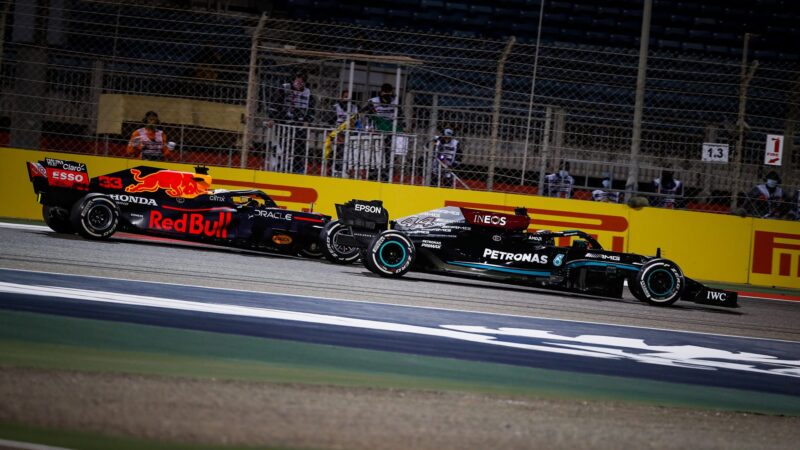
Off-track pass forced Verstappen to hand back the lead to Hamilton
Florent Gooden / DPPI
The move was bold – around the outside of Turn Four, taking advantage of Hamilton being compromised lapping Antonio Giovinazzi’s Alfa. But he couldn’t make it stick, the Red Bull surrendering grip and forcing him to run off track to complete the move. It wasn’t a legitimate pass and he was obliged to give the place back a few corners later. As he then renewed his attack, a big slide through Turn 13 confirmed his tyres had heat-degraded into uselessness. He had nothing left – and Hamilton, who had driven with perfect judgement and precision, was off the hook.
A long way behind Bottas, Norris took the ‘best of the rest’ award in the McLaren-Mercedes with fourth.
Other novelties & standouts
The AlphaTauri-Honda was arguably the third-quickest car, but they under-delivered. Pierre Gasly cleared Q2 on the mediums rather than the softs of the slower cars, qualified fifth but hit the back of Daniel Ricciardo’s McLaren in the early laps, ruining his race. F1 debutant Yuki Tsunoda had been sensationally quick through the practices, regularly quicker than Gasly, but didn’t adapt as well to the very different handling of the car on the mediums in Q2 and so didn’t graduate. But he is set to create a major stir this year.
Fernando Alonso’s comeback race was typically feisty and opportunistic even if by his own admission he’s still leaving some performance on the table as he readapts. He put the Alpine into Q3 and was battling with Tsunoda in the midfield when debris in a brake duct overheated and ultimately destroyed the brakes.
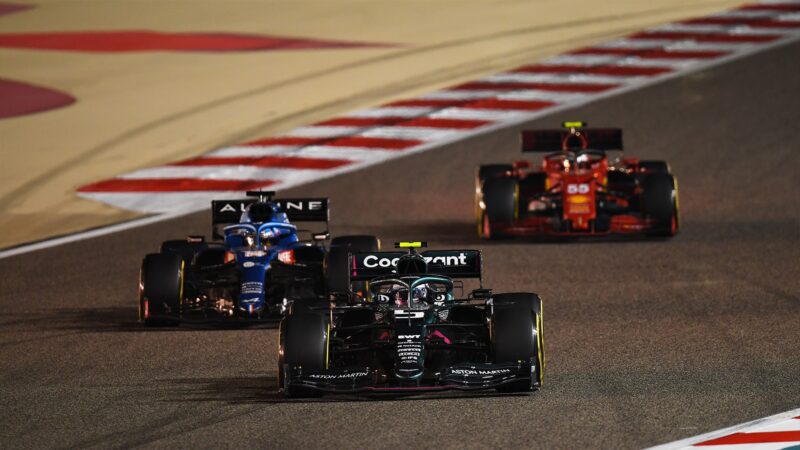
Unfamiliar surroundings for Vettel, Alonso and Sainz
Clive Mason/F1 via Getty Images
Ferrari is in better shape than last year. But not to the extent that Leclerc’s astonishing qualifying lap made it look. He put it fourth on the grid less than a tenth adrift of Bottas. He was a minute behind in the race, in sixth. It was generally not quite as quick as a McLaren but he’d qualified it within a tenth of a Mercedes.
Lots of drivers in new teams with very little preparation because of the restriction in testing made it something of a theme for them to be saying they needed more time to be at their best. It wasn’t just Alonso. Ricciardo, Carlos Sainz at Ferrari, Sebastian Vettel at Aston all said the same. Yet Tsunoda had only an F2 car with which to compare. Mick Schumacher completed the race in the Haas, Nikita Mazepin crashed the other one out seconds into the race.

